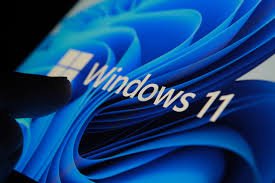KB5016691 is one of the most controversial Microsoft patches in recent memory. Available for Windows 7, 8.1, and 10, KB5016691 has been met with a lot of criticism from users because of its unpredictable behavior. From freezing your computer to corrupting your files, this patch can do just about anything. And if that wasn’t enough, it’s also causing widespread device failures. In this blog post, we will explore what KB5016691 is and why it’s causing so much trouble. We will also provide step-by-step instructions on how to remove it from your computer safely and without damage.
KB5016691
Microsoft has released a security update for KB5016691. This patch addresses an issue that could allow an attacker to gain access to information that should be restricted. Microsoft recommends that users install this update as soon as possible.
This update is important because it fixes a security vulnerability. If you are affected by this vulnerability, you should install the patch as soon as possible. If you don’t install the patch, you may be at risk of being vulnerable to this attack.
If you have not installed this update yet, we recommend that you do so as soon as possible. You can find more information about how to install the update on Microsoft’s website.
What is KB5016691?
KB5016691 is a Microsoft patch that was released on December 10, 2017. The patch was labeled as a security update for Windows 10 Version 1709 and Windows Server 2008 R2. KB5016691 is causing many people to question its purpose and use.
The main concern with the KB5016691 patch is that it appears to be adding features to Windows without asking for feedback from the community. Microsoft has a history of releasing unfinished or buggy patches, which can result in systems becoming unstable or unusable.
Microsoft has not yet released any significant updates since the release of KB5016691, which may further add to people’s concerns about the patch’s purpose. Until Microsoft provides more information about the patch and its intentions, it may be best to avoid downloading and installing it on your systems.
How to Fix KB5016691
If you’re experiencing problems with KB5016691, below are a few steps to take to try and fix them.
1. Open up Services.msc and make sure that Windows Update is checked. If it isn’t, click on the link in the “Updates Available” pane and then check it.
2. If Windows Update is working properly, try disabling Automatic Updates for one or more devices in your organization. You can find this setting by going to File > Options > Update & Security and clicking on the “Advanced” tab. Here, you’ll see a list of all the devices connected to your computer and their status (automatic updates enabled/disabled). Disable updates for any device that you don’t want to install KB5016691 on.
3. If disabling automatic updates didn’t work, try restarting your computer and then trying updating again. Sometimes when things go wrong with an update, rebooting can help get things back in order.
4. Finally, if none of these solutions work for you, please reach out to Microsoft support for further assistance troubleshooting KB5016691 issues on your computer.
KB5016691: What is it?
KB5016691 is a security update for Microsoft Windows 10 version 1709 and earlier. The update addresses a vulnerability in the file handling of PDF documents. A remote attacker could exploit this vulnerability to execute arbitrary code.
This security update is being released as part of the September 2018 Update servicing stack and is currently available on Windows Update and Microsoft Update. More information about this update can be found here KB5016691.
Is KB5016691 a virus?
KB5016691 is a Microsoft patch that is causing concern because it has the potential to affect system performance and stability. Some users are reporting that KB5016691 is causing their systems to become unstable or even crash. If you are experiencing these issues, you should consider installing an alternative antivirus software until Microsoft releases a resolution. Until then, you can try disabling KB5016691 if possible.
How to protect me from KB5016691
If you’re one of the unlucky ones who’s experiencing KB5016691, there are a few things you can do to protect yourself. First and foremost, be sure to keep your system up-to-date with the latest security patches. Second, make sure that you have antivirus protection installed and configured properly. Finally, exercise extreme caution when opening attachments in emails or visiting unknown websites.
Conclusion
When Microsoft released KB5016691, the company’s most recent security patch, it was met with mixed reactions. Some users took to social media to praise Microsoft for its efforts in releasing a new security update, while others criticized the company for not providing a more detailed description of what the patch contained and why it was necessary. The truth is that everyone will have their own opinion on this particular security update; what matters most is how you plan on deploying it. If you are concerned about potential problems that might be caused by KB5016691, then I recommend taking the time to read through the official release notes before installing the update.


